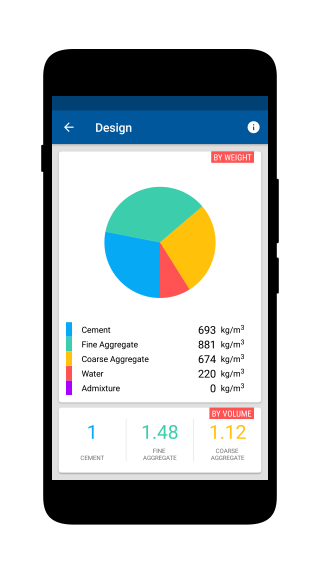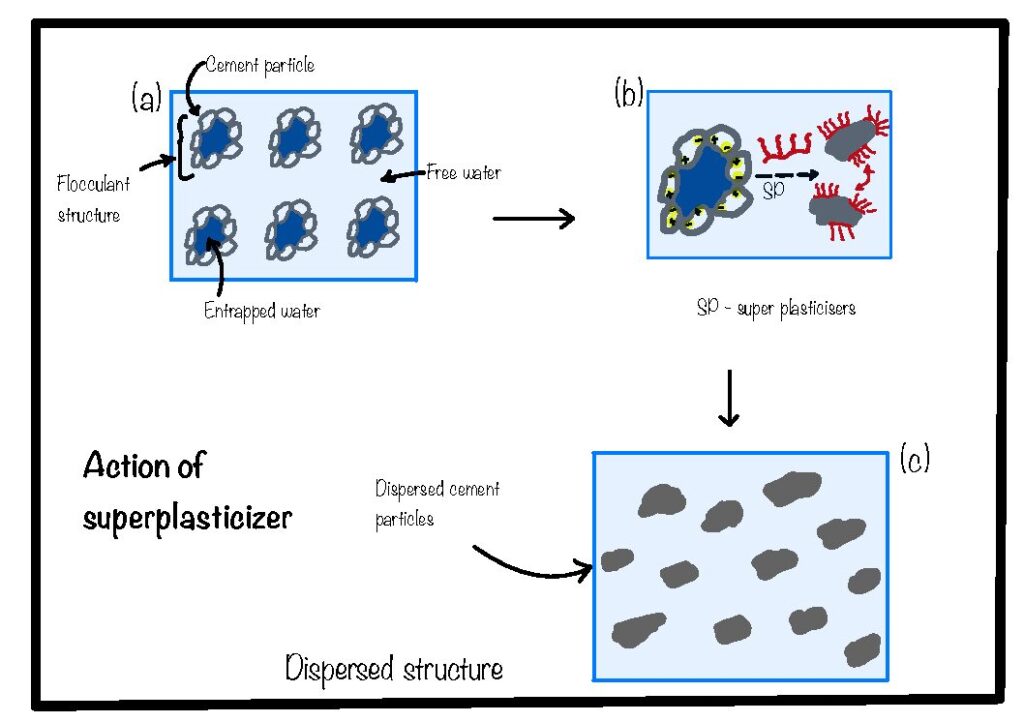In this emerging world of modern design of structures, Concrete acts as the backbone of civil engineering. A structural engineer’s first and foremost objective is to build an efficient and durable concrete structure that is also aesthetically pleasing. Here comes the role of a concrete designer. When the aim is to build a concrete structure that is efficient and durable, this demands to follow the concrete mix design steps as per IS codes (IS- 10262:2009 and IS- 456:2000).
Here comes the role of Admixture.
Admixtures are chemical compounds that alter the properties of concrete. We can add admixtures before or during the concrete mix as an ingredient of concrete, other than cement, aggregate, and water. The mostly used admixture is plasticizers and super plasticizers because of its own standout advantages. These admixtures reduced the quantity of water and thus helps in achieving high strength concrete. As it is evident that when the water cement ratio is reduced even though the strength is increased but it widely affects the workability of concrete.
In many developed country now its a trend to use ready mix concrete which is only possible because of the admixtures. The ready mix concrete should not set at the time of transportation so we add specific retarders.
A single solution to many problems faced by concrete engineers……
Yes, By using accurate and exact amount of admixtures in the concrete mix
Why Use admixtures?
Admixtures can solve many problems and enhance the properties of concrete. We use different types of admixtures, for different functions.
Different Functions of Admixtures:
Some of the different functions of commonly used admixtures are as follows:
- Water reduction
- Retarders
- Accelerators
- Plasticizers
- Increase the Workability
- Alter the Temperature
- Damp-proofing and Waterproofing agent
Use Admixtures Efficiently and Economically!!!!
Concrete Mix Design
- Calculate cement, sand and aggregate quantity in concrete.
- Calculate the number of premix bags required for your project.
- Option to set your own size and rate of premix bags.
- Calculate the volume of concrete required for slabs, walls, footings and columns.
- Calculate the weight of ingredients required for preparing the calculated volume of concrete.

Different Types of Admixtures
There are many different types of admixture available in the market; some of them are as follows:
Plasticizers
For good workability, without altering the water-cement ratio
Superplasticizers
It is a high range water reducer. It is not possible to increase the water content after a specific amount because after a specific amount of water, further increase in water will reduce concrete strength.

Retarders and Retarding Plasticizers
When the engineer wants to retard the setting time. In most cases, we combine retarders and plasticizers at the time of production.
Accelerators and Accelerating Plasticizers
We use this admixture when there is a demand of an early strength development.
Air-entraining Admixtures
In areas where frost scaling or freezing and thawing of concrete is a problem, we use this admixture type.
Damp-proofing and Waterproofing Admixture
Concrete must be impervious to water. When subjected to water pressure on one side or when there is a chance of absorption of surface water by capillary action, we should use this type of admixture.
Air-detraining Admixtures
When aggregates have released gas into or cause excessive air entrainment in plastic concrete. Which made it necessary to use an admixture capable of dissipating the excess of air or other gases.
Alkali-aggregate Expansion Inhibiting Admixture
To reduce the alkali-aggregate reaction, which affects the desired properties of concrete.
Workability Admixture
Admixture is used to increase the workability of concrete. When we demand high strength concrete, the water-cement ratio is kept very low, reducing workability.
Corrosion Inhibiting Admixture
Concrete surfaces in which corrosion of reinforcement is a problem, it may be because of the environmental condition or the chemical reactions taking place. When we want to control this, we use this type of admixtures.
Bonding Admixture
This admixture is used when we have to build a bond between the old and new concrete surface.
Coloring Admixture
These are pigments that are often added to produce color in the finished concrete
Miscellaneous Admixture
There are hundreds of commercial admixtures available in the market. They affect more than one property of concrete.
Before Using any Admixture, have a very Good Knowledge About the Chemical Properties of the Admixture and its Effect on the Fresh and Hardened concrete …………
Based on the exposure condition the type of admixture changes. Before deciding which type of admixture is best suited for you, just have a prior knowledge about the exposure condition as per concrete mix design procedure. “Why Exposure Condition In Concrete Mix Design“.
It is very important to use admixture and consider the quantity and specific gravity of concrete while doing concrete mix design for an efficient and durable structure so that the concrete’s desired properties can be achieved. Let us take an example of Air-detraining Admixtures , if we are using this admixture in our concrete mix it will surely affect the entrapped air concentration, and thus the quantity of different material will not be accurate.
For detailed Mix Design Procedure, go and check this post : “Concrete mix design procedure as per IS 10262:2009 & IS 456:2000.”